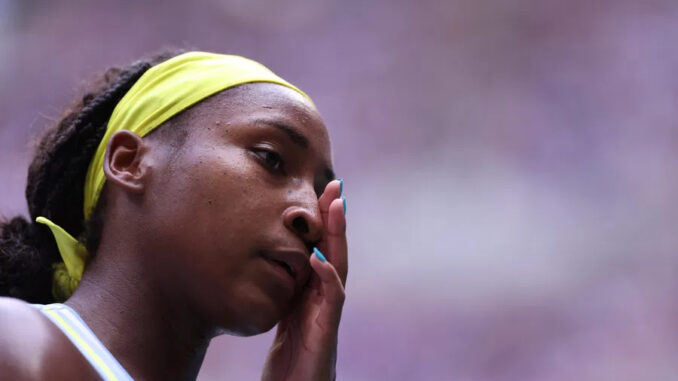
Coco Gauff’s remarkable $30 million in earnings has ignited a firestorm of discussion across the sports landscape, not for its impressiveness in isolation, but for what it reveals about the persistent gender pay gap. While a $30 million income would be a dream for most athletes, the fact that it falls short of the top 100 highest-paid athletes list has underscored the deep financial disparities that continue to plague women’s sports. Gauff’s success, a testament to her undeniable talent and growing marketability, serves as both an inspiration and a stark reminder of the challenges women face in achieving true financial parity with their male counterparts.
Gauff’s income is derived from a potent combination of on-court success and lucrative endorsements. Her recent triumph at the WTA Finals, a crowning achievement that solidified her position as the top-ranked American female player since the legendary Serena Williams, undoubtedly contributed significantly to her impressive earnings. This victory not only showcased her exceptional skills and competitive spirit but also reinforced her status as a global icon, attracting the attention and investment of major brands eager to associate with her rising star. Endorsement deals, a crucial component of any top athlete’s income, play a particularly significant role in bridging the gap between prize money and overall earnings. Gauff’s partnerships with prominent brands reflect her broad appeal and marketability, demonstrating her influence beyond the tennis court.
However, even with these substantial endorsements and her on-court victories, Gauff’s $30 million falls short of the estimated $37.5 million needed to break into the top 100 highest-paid athletes list. This gap, while seemingly small in the context of millions, speaks volumes about the systemic inequalities that permeate the world of professional sports. It’s not just a matter of a few million dollars; it’s a reflection of a system that often undervalues the achievements and marketability of female athletes.
This disparity is not unique to tennis; it’s a pervasive issue across a wide range of sports. While women have made significant strides in recent decades, their earnings continue to lag behind those of male athletes in most disciplines. From basketball and soccer to golf and track and field, the story is often the same: women are paid less, receive less media coverage, and have fewer sponsorship opportunities than their male counterparts. This disparity is not simply a matter of individual talent or effort; it’s a systemic problem rooted in historical biases and societal norms that have long marginalized women in sports.
Several factors contribute to this persistent pay gap. One of the most significant is the difference in viewership and media coverage. While women’s sports are growing in popularity, they often still attract smaller audiences than men’s events, which can lead to lower broadcast revenue and less sponsor interest. This, in turn, can create a vicious cycle, where less media attention leads to less exposure for female athletes, making it harder for them to attract endorsements and build their brand.
Another contributing factor is the historical underinvestment in women’s sports. For years, women’s leagues and organizations received far less funding and support than their male counterparts, which has created a significant disadvantage in terms of infrastructure, marketing, and player development. This historical disparity has had a lasting impact on the financial landscape of women’s sports, making it more difficult for female athletes to achieve the same level of financial success as men.
Gauff’s case serves as a powerful illustration of these complex issues. While her $30 million earnings are undoubtedly a testament to her talent, hard work, and marketability, they also highlight the significant barriers that women still face in the world of professional sports. It underscores the urgent need for greater investment in women’s sports, increased media coverage, and a concerted effort to promote gender equality at all levels of athletics. Only then can we hope to create a level playing field where female athletes are recognized and compensated for their achievements in the same way as their male counterparts. It’s not just about closing the pay gap; it’s about recognizing the value and contributions of women in sports and creating a more equitable and just sporting world for future generations. Gauff’s success is a victory, but the fight for true equality continues.
Leave a Reply